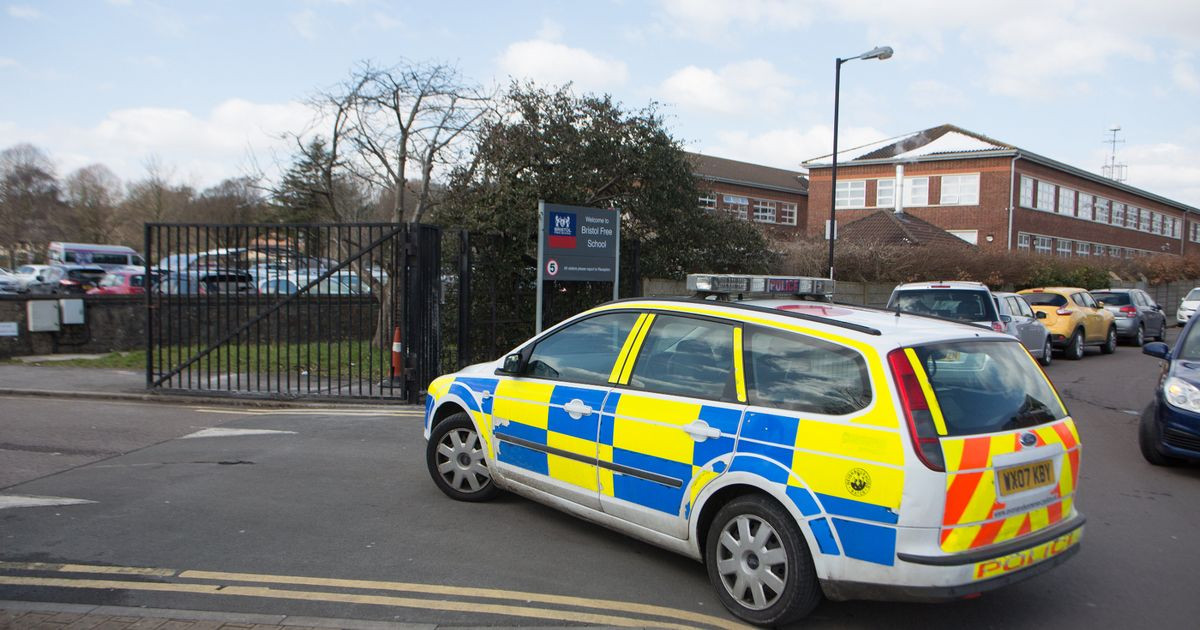Mayor Eric Adams — who was federally indicted Wednesday — has spent the latter end of his first term mired in battles with the White House over the migrant crisis, with Hizzoner lobbing repeated accusations that President Biden has left the Big Apple to fend for itself.
“Help is not on the way,” Adams told reporters after meeting with Biden to discuss the crisis back in December 2023 — and ever since his rhetoric towards the White House has only grown grimmer.
“The national government has turned its back on New York City,” he said months later, adding that “every service in this city is going to be impacted by the asylum seeker crisis.”
Those comments were just a few in a long chorus of complaints about the Biden administration from an increasingly frustrated Adams — who at one point called on New Yorkers to march on DC over migrants being shipped by the thousands to the Big Apple. The city spent at least about $5.5 billion on the migrant crisis as of August, which has gone toward housing more than 250,000 migrants since 2022.
The crisis is expected to cost the city upwards of $12 billion by 2026, but the count by July was already hundreds of millions of dollars more than than the predicted budget by that time. City Hall estimates that amount represents about 69% percent of the total cost for the migrant crisis, while the state will absorb 30% — the federal government meanwhile is only expected to cover 1% of it.
Adams Calls Out Biden
Adams has called Washington’s refusal to fork over more cash “baffling,” explaining how over the course of numerous meetings with the Biden administration he has failed to be given a concrete commitment for greater help.
“I am lost. I am confused on this topic on why we still, almost 20 months later, we’re still talking about this issue and it has inundated the city,” Adams told Fox 5 in December 2023.
Months later in August Adams declared “we are past our breaking point,” but over a year later the crisis shows no sign of slowing down.
The Roots of the Crisis
The city has claimed “sanctuary city” status for decades — meaning it refuses to cooperate with federal immigration officials, even when migrant fugitives are identified — and it was codified under Adams’ predecessor, Mayor Bill de Blasio.
Migrants first started arriving — largely from the southern border — about two years ago. Some were being bussed up on the orders of Texas Governor Greg Abbott, who in spring 2022 rolled out a campaign of sending migrants from his overwhelmed state to cities which had declared themselves sanctuaries.
Adams was not pleased with this move, however, and accused Abbott of trying to “hurt black-run cities” and using human beings as political pawns. Months after Abbott started his busing, Adams complained that both political parties were “doing nothing” to stop the crisis.
“The far right is doing the wrong thing. The far left is doing nothing,” he said in October 2022. “I mean, the silence — I don’t believe the silence I’m hearing.”
Biden's Role in the Migrant Crisis
But Biden’s administration has also actively participated in sending migrants to Gotham. While roughly 37,000 of the city’s migrants had been bused in from Texas as of Spring 2024, the Department of Homeland Security had flown in about 33,000 migrants into the city — without coordinating any of it with City Hall, according to findings from the Center for Immigration Studies. This revelation has added fuel to the fire, causing a significant backlash against the Biden administration and further straining the already tense relationship between the city and the federal government.
The Impact Beyond NYC
More than a year ago, county leaders across the state declared states of emergency in response to asylum seekers being relocated outside of New York City. While these orders have been allowed to expire in some counties, others are being extended despite the number of relocations trailing off.
County leaders, citing strained resources, pre-existing homelessness issues and public safety concerns, issued emergency orders, preventing or limiting migrants from being brought to their respective communities.
“We have seen an influx of people needing direct services and case management assistance,” said Diana Campos, who helps lead Columbia County Sanctuary. Dozens of people have been brought back to New York City and some emergency orders have lapsed. A state Supreme Court decision in December saying short-term rentals hotels and motels are not allowed to operate as a homeless shelter.
“A lot of these executive orders address those particular industries,” said New York State Association of Counties Executive Director Stephen Acquario. “It’s not really based on New York City, it’s based on the hotels that are located within their counties, it’s a power they have locally.”
Per the state’s Division of Homeland Security and Emergency Services, more than 20 counties have some sort of emergency order still in place. There are others like Chautauqua County that have not self-reported its measures to the state, which they’re not required to do.
“I’m overall disappointed that a lot of the national conversations and lies that have been put out are now being seen here,” Campos said. But county leaders say emergency orders help protect community resources should the migrant situation in New York City and across the state change.
“For some counties, they are litigating against the hotel industry, the City of New York,” Acquario explained. “Seeking a permanent injunction so the City of New York can never do this ever again.”
In the meantime, advocacy organizations are continuing work to help migrants make a smooth transition. “The people who have arrived here to our community are here because they often have viable asylum cases and have big goals of contributing to our community,” Campos said.
Acquario believes the Empire State is disproportionately impacted by policies along the southern border. He hopes the federal government takes note with New York City spending more than $10 billion to address the inflow of migrants, not to mention the billion contributed to the situation by the state.
A Shift in Democratic Sentiment
Democrats have historically stood up for migrants, but that has changed in recent years.
Not so long ago, being proudly and even a little brazenly pro-immigrant was a standard Democratic political credo in New York City, perhaps the easiest way to signal that the speaker was standing firm against the encroachment of Donald Trump, the city’s most infamous son, who built his political career and presidential administration in part around assailing immigrants.
In the early days of the Trump presidency, as the chaos of the so-called Muslim ban was unfolding, then-Mayor Bill de Blasio pledged to preside over a city government that “protects its people” and spent much of the subsequent years rhetorically railing against Trump efforts to punish immigrants, saying among other things that it was “un-American to punish families for seeking help, plain and simple.”
Those days are over. Beyond well-publicized remarks about the notion that migrants could “destroy New York City,” Mayor Eric Adams has tossed around the idea of more closely cooperating with U.S. Immigration and Customs Enforcement to detain them, which is both a misunderstanding of the migrants’ current status and a remark that would have been anathema to any New York City mayor less than half a decade ago.
It’s easy to blame the slow collapse of public support for immigration and the growing sense of mistrust for migrants and immigrants writ large on the weaponization of the narrative by right-wing interests. For example, Fox News suddenly made “migrant crime” a daily drumbeat, despite no real corresponding crime spike, but that’s only one side of the coin. That narrative, pushed locally by elected officials like Rep. Nicole Malliotakis, has thrived because of the unilateral disarmament of the other side, leading to a barrage with little pushback.
The Politics of Fear
Democrats have become terrified that voters will punish them for seeming too concerned about a population that itself cannot vote, and which some New Yorkers seem to hold partially responsible for every other unrelated policy failures – including a dearth of affordable housing – which have held up the city’s post-pandemic bounce back. The message has been sinking in. In a nationwide CBS News/YouGov poll of adult voters conducted this summer, 62% supported some sort of program to deport all undocumented immigrants, including a shockingly strong showing of 39% for voters under 30. In New York City, a May poll conducted by Redfield & Wilton Strategies for Newsweek found that 45% of voters said migrants had affected their quality of life “a significant amount,” an almost entirely narrative-driven perspective, given that few New Yorkers are likely even interacting with new migrants on a daily basis.
Voters hear that the Adams administration cut funding for schools and libraries and that migrant families are getting prepaid debit cards and they default to a “what about us?” stance. In many cases, they won’t hear about how Adams reinstated a lot of the cut funding, or how even in its expanded form, the debit card program will cover only some 2% of migrants and is mainly an attempt to circumvent their ineligibility for benefits like the Supplemental Nutrition Assistance Program.
The Missing Argument
Someone needs to tell them that, and to more actively make the case that there is a perspective shift here where migrants are not an economic drain but an economic boon, not to mention a cultural one. It shouldn’t be that difficult an argument to make in New York City: a global synonym for the power of immigration to generate a locus of business, art, urban development, education and so on.
The city itself has estimated that around half of the city’s roughly 220,000 businesses are immigrant-owned. Half. Close to 40% of the city’s population is foreign born, as is nearly half its workforce. Historically, every single immigrant group to reach New York has been met with distrust and opposition before eventually integrating. Even if we were to assume that the bulk of the 210,000 or so migrants who’ve come through the city’s care during this latest wave have stayed in the five boroughs – though some proportion have certainly left – that is a 2.5% increase of the city’s population, which isn’t even half what the city lost between 2020 and now. You could forcefully make the case not only that this isn’t an anchor, but a potential lifeline for the city. Yet who’s making it?
I’ve certainly tried, writing in this magazine and elsewhere in concrete terms about the steps the city, in conjunction with the state and federal governments, could take to set up migrant arrivals to more quickly reach self-sufficiency and help reverse some population decline and soothe the labor market. I wrote a report last year laying out specific issues and recommendations around integrating migrants into the workforce. I talked about that, among other things, with Brian Lehrer a couple months ago. But this has to come from elected leadership with the voter credibility and decision-making firepower to counter the torrent of anti-immigrant political spending, rhetoric and organizing on the right, and there seems to be little appetite.
A Beacon of Hope
This isn’t to say that there are zero voices with political heft making a case for the value of immigrants, including migrants. Reps. Adriano Espaillat and Alexandria Ocasio-Cortez have reliably held the line that migrants are regular people forced to come to this country to seek a better life; during a visit to the Roosevelt Hotel shelter last year, Espaillat said migrants were “people that want to work, people that are fleeing violence, people that are fleeing environmental disasters” – a simple reminder of the fact of their status not just as migrants but asylum-seekers, which nonetheless seemed refreshing. New York City Comptroller Brad Lander, who is running against Adams in the mayoral primary, has been a consistent voice of optimism on the arrival of immigrants.
At the start of this school year, schools Chancellor David Banks surprised political observers by calling migrants students a “godsend” that was stanching some of the department’s nosediving enrollment. This was unexpected mainly because his boss, Adams, has veered from tepid to hostile on migrants. Even when the mayor has tried to talk about the migrants’ potential, it’s been a bit off the mark, as with the somewhat bizarre contention that they could address the city’s lifeguard shortage because they’re “excellent swimmers,” possibly an apparent reference to the trope of the “wetback” that swam across the Rio Grande.
So far, the electoral terror seems a little misplaced. On Long Island, Democrat Tom Suozzi won by 8 points in what had been seen as a nail-biter race to replace disgraced former Rep. George Santos in the 3rd Congressional District. Republicans had been practically giddy about the prospect of tarring Suozzi with the open borders tag, and GOP candidate Mazi Melesa Pilip leaned hard into the rhetoric with the talking point that migrant arrivals were an “invasion,” which, as The New Republic noted, was a 180 from her position just a few months prior. It didn’t work.
Granted, that race had its own special dynamics, including the embarrassment of Santos’ flameout and Pilip’s relatively low profile. Suozzi was certainly no immigration dove himself. Still, he didn’t play the game of trying to be tougher on the border than his Republican opponent, and pushed back in some concrete ways; in a press conference outside the Creedmoor Psychiatric Center shelter early this year, right after Pilip held her own press conference to bash him on “our border crisis,” he took the opportunity to criticize ICE’s sloppy operations in Nassau County.
The Way Forward
At the end of the day, even from a purely strategic standpoint, it doesn’t make much sense to be playing only defense on immigration, ignoring the issue as much as possible and stumbling through it when necessary on terms set by the extreme right. If our political leaders don’t want voters to punish them for the fact that immigration is continuing and will always continue, then they have to actively make the case for immigration, for the potential of immigrants – including asylum-seekers – to contribute as generations of immigrants have before. This must be practical, consistent, and said with one voice from the upper echelons of city and state leadership. You can’t win a messaging war with only one side fighting.

















